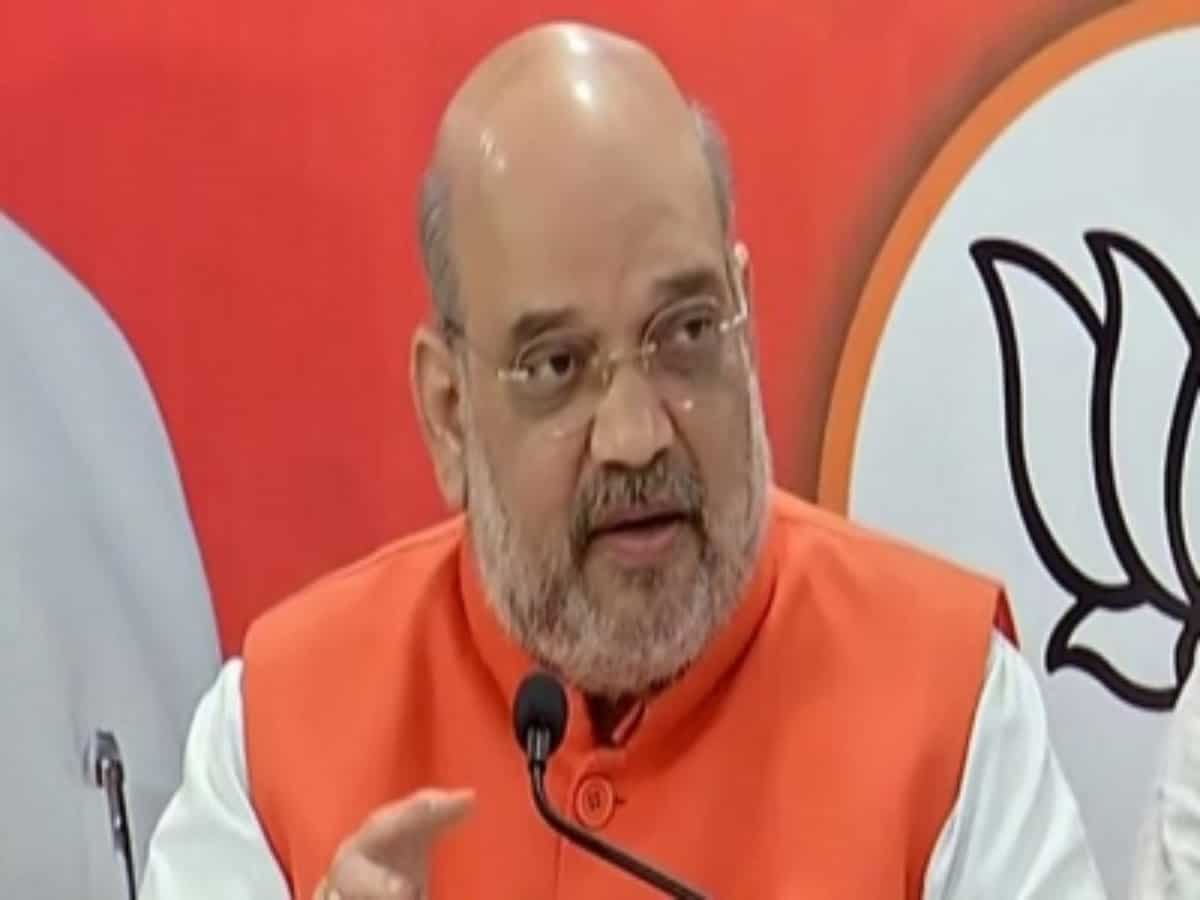

A country with a single Constitution, a single flag, and a single language is a great idea for having a strong and united nation, but India is not that country and the sooner BJP learns and accepts that it would be better.
BJP’s task is more difficult because it must make a pluralistic, multi-cultural, multi-lingual, multi-religious country united and strong. The way forward is not uniformity but unity.
The flurry of anger and resentment brought about by the statement of Home Minister Amit Shah to make Hindi the language of communication for people of non-Hindi speaking areas as an alternative to English and not regional languages should make BJP wary of touching on this highly sensitive issue.
Whatever may be the political compulsions of the BJP and Amit Shah who has been making such statements even earlier, they must know that all attempts made since Independence to “impose” Hindi uniformly throughout the country had failed miserably.
One of the reasons is that it gave undue advantage to the about 40 percent Hindi speaking people of the country compared to 60 percent others.
Amit Shah had made the remarks during the 37th meeting of the Parliamentary Official Language Committee in New Delhi and may be given the benefit of doubt that it was part of his duty to propagate the use of Hindi.
The strong reaction of the Opposition leaders almost all over the country shows that they have misgivings about the motive behind the statement of Shah as he had made such remarks even earlier which even then had got the Opposition up in arms.
Language is one of the most emotive issues and in a multi-lingual, multi-cultural, and pluralistic country politicians of any hue including the BJP must tread their path cautiously.
Politicians from many different parties have come out with strong statements against the attempt to “impose Hindi” and create a “single identity” to establish ‘Hindi imperialism’. Hindi should not be promoted at the cost of English.
Indian politicians must respect multiculturalism and a pluralistic identity which has become a part of Indian identity since Independence.
Shah’s point was that citizens of States while communicating with each other should speak in an Indian language and Hindi could serve as a link language as an alternative to English.
Shah had earlier even said that “unity and diversity is the strength of our country but a national language is needed so that foreign languages do not overpower our own.”
He said that “India has many languages and every language has its importance. But it is absolutely necessary that the entire country should have one language that becomes India’s identity globally.”
This time Shah in his nationalistic fervor perhaps forgot to realize that we cannot be averse to the English language even though it is a foreign language and language of the imperialist British who ruled over us.
Today English has been given the status of an Indian language and even literary awards are given to writers in that language by none other than the prestigious national institution like the Sahitya Akademi.
English language which was supposed to have been phased out soon after Independence, spread and took deep roots in the country with English-speaking courses, and coaching classes sprouting in every nook and corner of the country even today. English speakers continue to enjoy a high status in the eyes of the Indian public.
In this whole debate, some interesting question has also been raised about whether any Hindi-speaking politician will be ready to learn a south Indian language instead of ramming Hindi down everyone’s throat.
With opposition leaders from the south declaring that Hindi was not the national language and they would never let it be, the whole attempt it is felt may create more divisions rather than unity. Some leaders took it as diversionary tactic to divert attention from many other pressing socio-economic issues.
As far as the official position is concerned there is no ‘national’ language in India, though according to the Constitution, Hindi is the official language of the Union in the Devnagri script. English was added as an official language following protests from South Indian states where Hindi was not their mother tongue in 1963.
States were allowed to legislate on their own for the official language of the state and today, many languages including Assamese, Odia, Bengali, Marathi, Gujarati, Hindi, Kannada, Kashmiri, Malayalam, Punjabi, Sanskrit, Tamil, Telugu, Urdu, Sindhi, Konkani, Manipuri, Mizo enjoy being the official language i.e. official work is carried out in these languages in these states. Between states and between states and the union, official work is carried out using either Hindi or English.
The United States of America has been debating the question of adopting an official or national language for nearly 200 years but has not succeeded so far due to its multi-lingual setup. Giving even English that status by law or trying to enforce English would be discriminatory towards other linguistic groups.
India is not a single monolith but consists of diverse groups of people with a completely distinct linguistic and cultural history.
Language is critical to a community and the group’s cultural heritage is preserved in its language.
India has also witnessed language riots by citizens trying to preserve their mother tongue and has been known to go to any extent to defend their language.
There are 22 major languages with 13 scripts and thousands of dialects.It is interesting to look at some official Indian figures (Census 2011) of people speaking their mother tongue in a particular language and its percentage in India, like those speaking Hindi (43.63%), Bengali (8.03%) Marathi (6.86%), Telugu (6.70%) Tamil (5.70%), Gujarati (4.58%), Urdu (4.19%), Kannada (3.61%), Odia (3.10%), Malayalam (2.88%), Punjabi (2.74%), Assamese (1.26%), Maithili (1.12%).
As far as south Indian languages are concerned they are not even based on the Sanskrit language which is the root language for Hindi.
South Indian languages like Tamil, Telugu, Malayalam, and Kannada were considered by some to be much more ancient and much stronger and richer languages than Hindi, which was a relatively new language.
BJP’s thrust for one flag, one Constitution, and one leader for one nation does not intrude upon the linguistic and cultural diversity which is the strength of India but broadening it up to have one language, one religion, and one culture simply goes against the concept of modern India and clearly not acceptable to many.
The reality is that English instead of being the second language is even becoming the first language with many mothers, who are today speaking to their toddlers only in English to the neglect of even the mother tongue. So that the child will be able to speak English like it is his/her mother tongue.



